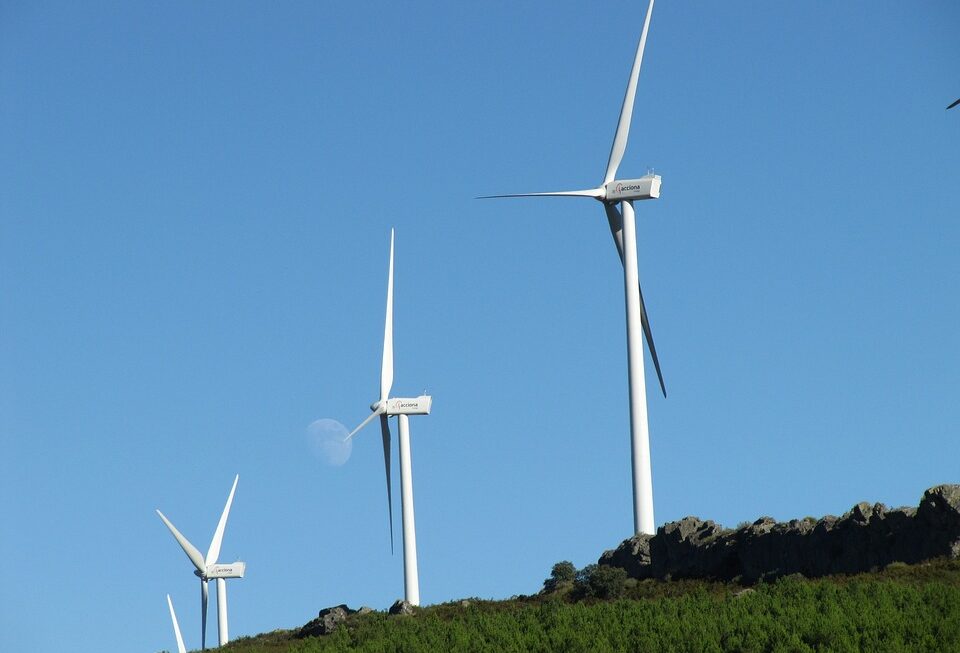[ad_1]
Harnessing the Power of the Waves: How Tidal Energy is Revolutionizing Renewable Energy
As the world continues to grapple with the impacts of climate change, there has been a growing emphasis on the need to transition to renewable sources of energy. Renewable energy technologies such as solar and wind power have gained significant traction in recent years, but another form of renewable energy that is gaining attention is tidal energy. Tidal energy, also known as wave power, harnesses the energy from the natural ebb and flow of the ocean’s tides to generate electricity. This article will explore how tidal energy works, its potential as a renewable energy source, and the role it could play in revolutionizing the energy industry.
How Tidal Energy Works
Tidal energy is a form of hydropower that converts the kinetic energy of the ocean’s tides into electricity. There are several different methods for harnessing tidal energy, but the most common approach involves the use of tidal turbines. These turbines are similar in concept to wind turbines, but instead of using the wind to turn the blades, they use the movement of the water to generate electricity.
Tidal turbines are typically installed on the sea floor in areas with strong tidal currents. As the tides rise and fall, the water flows past the turbines, causing them to spin and generate electricity. The electricity is then transmitted to shore via underwater cables, where it can be integrated into the power grid and used to power homes, businesses, and other facilities.
Another method for harnessing tidal energy is through the use of tidal barrages, which are large dams built across the estuaries of rivers. As the tide comes in, the water is trapped behind the barrage, and as it recedes, the water is released through turbines to generate electricity.
The Potential of Tidal Energy
Tidal energy has the potential to provide a significant amount of renewable electricity. The World Energy Council estimates that the total potential energy from tidal resources worldwide is around 2300 TWh per year, which is approximately 3% of the world’s total electricity consumption. In regions with strong tidal currents, such as the United Kingdom, France, Canada, and South Korea, tidal energy could provide a substantial portion of the electricity demands.
Tidal energy also offers several advantages over other forms of renewable energy. Unlike solar and wind power, tidal energy is predictable and reliable, as the tides follow a regular and consistent pattern. This means that tidal power can provide a reliable source of base load electricity, which is essential for maintaining a stable power grid. Additionally, tidal energy has a higher energy density compared to wind and solar, meaning that a smaller installation can generate a significant amount of electricity.
Furthermore, tidal energy has a low environmental impact compared to other forms of energy generation. Tidal turbines do not produce greenhouse gas emissions or air pollution, and they have minimal impact on the marine environment when properly sited. The use of tidal barrages may have some environmental concerns, such as altering the habitat of marine life, but these can be mitigated through careful planning and environmental impact assessments.
The Role of Tidal Energy in the Energy Industry
While tidal energy is still in the early stages of development, it has the potential to play a significant role in the future of the energy industry. As countries around the world seek to reduce their reliance on fossil fuels and curb carbon emissions, there is a growing interest in exploring new forms of renewable energy. Tidal energy could be a key component of a diversified energy mix, alongside other renewable sources such as wind, solar, and hydroelectric power.
In addition to its potential as a source of electricity, tidal energy could also provide other benefits to coastal communities. The installation of tidal energy projects can create local jobs and stimulate economic growth, particularly in regions with strong tidal resources. Furthermore, tidal energy could enhance energy security by reducing reliance on imported fossil fuels, which are subject to price volatility and geopolitical risks.
Challenges and Barriers
While tidal energy holds great promise, there are several challenges and barriers that must be overcome for it to realize its full potential. One of the main challenges is the high capital cost of tidal energy projects. The installation and maintenance of tidal turbines and barrages require significant upfront investment, which can be a barrier to the widespread adoption of tidal energy. Additionally, the technology for tidal energy is still in the early stages of development, and there is a need for further research and innovation to improve the efficiency and cost-effectiveness of tidal energy systems.
Another challenge is the limited availability of suitable tidal energy sites. Tidal energy is most viable in regions with strong tidal currents, such as coastal areas or estuaries. Identifying and securing suitable locations for tidal energy projects can be complicated and time-consuming, as it requires careful consideration of environmental, socio-economic, and technical factors.
Furthermore, there may be concerns around the potential environmental impact of tidal energy. While tidal energy has a lower environmental impact compared to fossil fuels, there are still potential effects on marine ecosystems and local coastal communities. It is essential to conduct thorough environmental impact assessments and engage with stakeholders to address these concerns and ensure that tidal energy projects are sited and operated responsibly.
The Future of Tidal Energy
Despite the challenges, the future of tidal energy looks promising. As technology continues to advance and costs decline, tidal energy is becoming increasingly competitive with other forms of renewable energy. There are several tidal energy projects currently in operation or under development around the world, and governments and private sector entities are investing in research and development to drive innovation in tidal energy technology.
In the United Kingdom, the world’s first large-scale tidal energy project, the MeyGen tidal energy project, has successfully generated electricity and demonstrated the commercial viability of tidal energy. In Canada, the government has provided funding to support the development of tidal energy projects in the Bay of Fundy, which has some of the highest tidal currents in the world. Additionally, South Korea, France, and other countries are also exploring the potential of tidal energy and investing in pilot projects and research initiatives.
As the technology for tidal energy continues to mature, it has the potential to become a significant contributor to the global energy supply. The International Energy Agency projects that tidal energy could potentially reach 200 GW of installed capacity by 2040, with significant potential for growth beyond that. If this potential is realized, tidal energy could play a critical role in helping to meet the world’s energy needs, reduce reliance on fossil fuels, and mitigate the impacts of climate change.
FAQs
Q: Is tidal energy renewable?
A: Yes, tidal energy is a renewable source of energy. It relies on the natural movement of the tides, which is driven by the gravitational pull of the moon and the sun. As long as the tides continue to ebb and flow, tidal energy can be harnessed to generate electricity.
Q: What are the advantages of tidal energy?
A: Tidal energy offers several advantages over other forms of renewable energy. It is predictable and reliable, has a higher energy density, and has a low environmental impact. Tidal energy can provide a reliable source of base load electricity and help reduce greenhouse gas emissions.
Q: Are there any environmental concerns associated with tidal energy?
A: While tidal energy has a low environmental impact compared to fossil fuels, there are potential concerns regarding its impact on marine ecosystems and coastal communities. It is essential to conduct thorough environmental impact assessments and engage with stakeholders to address these concerns and ensure that tidal energy projects are sited and operated responsibly.
Q: What is the current status of tidal energy technology?
A: Tidal energy technology is still in the early stages of development, but there are several tidal energy projects currently in operation or under development around the world. As technology continues to advance and costs decline, tidal energy is becoming increasingly competitive with other forms of renewable energy.
Q: What is the potential of tidal energy?
A: The World Energy Council estimates that the total potential energy from tidal resources worldwide is around 2300 TWh per year, which is approximately 3% of the world’s total electricity consumption. Tidal energy has the potential to become a significant contributor to the global energy supply and play a critical role in helping to meet the world’s energy needs and mitigate the impacts of climate change.
In conclusion, tidal energy has the potential to revolutionize the renewable energy industry and play a significant role in the transition to a more sustainable energy future. While there are challenges and barriers to overcome, ongoing advances in technology and ongoing investment in research and development are driving the growth of tidal energy. If fully realized, tidal energy could provide a reliable, low-impact source of electricity and contribute to the global efforts to combat climate change and reduce reliance on fossil fuels.
[ad_2]



